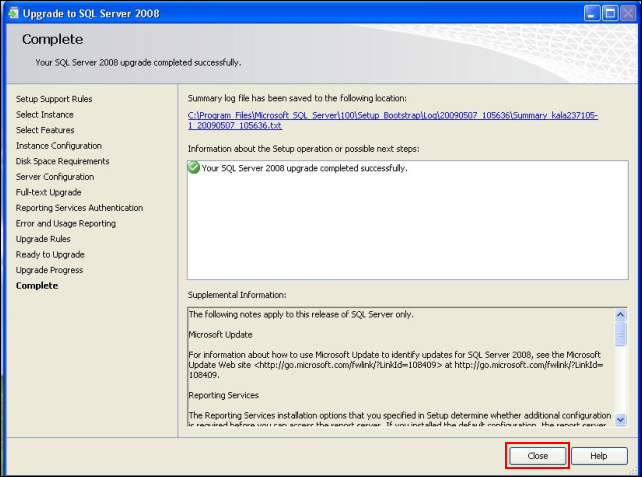The step-by-step guide to upgrade the existing Microsoft SQL Server to Microsoft SQL Server 2008 is explained in this document.
Before upgrading the existing SQL Server to SQL Server 2008, check the following prerequisites:
Once these prerequisites are met, proceed to the upgrading process.
1. Insert the SQL Server 2008 installation media. From the root folder, double-click Setup.exe. If the Microsoft SQL Server 2008 Setup dialog box appears, click OK to install the prerequisites. Otherwise, click Cancel to exit the SQL Server 2008 installation.
2. If you do not have Microsoft .Net Framework 3.5 SP1 installed, the installer will display the following message to install the Microsoft .Net Framework 3.5 SP1. Click OK to proceed.

3. Windows Installer 4.5 is also required. The following message will be displayed if it is not available. Click OK to proceed. If you are prompted to restart your computer, restart it, and then restart SQL Server 2008 Setup.exe.

4. After restarting SQL Server 2008 Setup.exe, the SQL Server Installation Center screen is displayed. Click Installation to proceed.
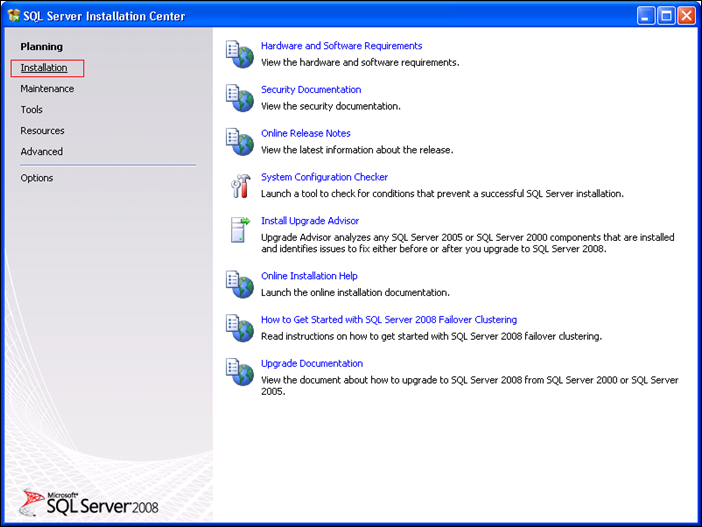
5. Select Upgrade from SQL Server 2000 or SQL Server 2005 to begin the upgrading process.
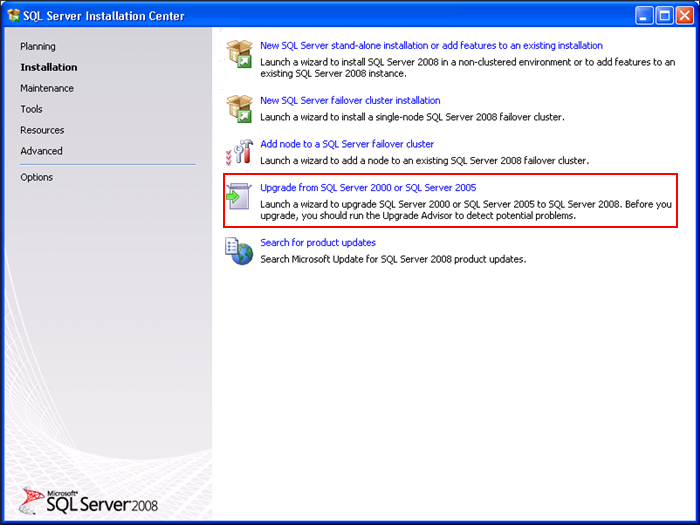
6. The Setup Support Rules screen is displayed. Click OK to proceed after the scanning is done.
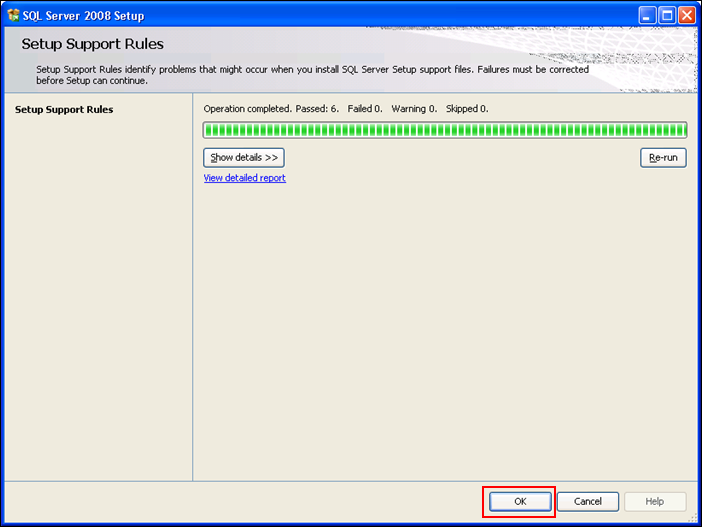
7. Enter the product key and click Next to proceed.
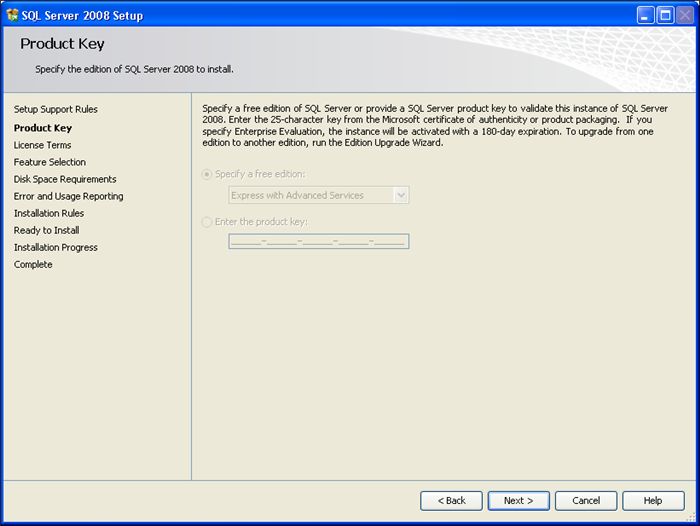
8. Select the I accept the license terms. check box and click Next to proceed.
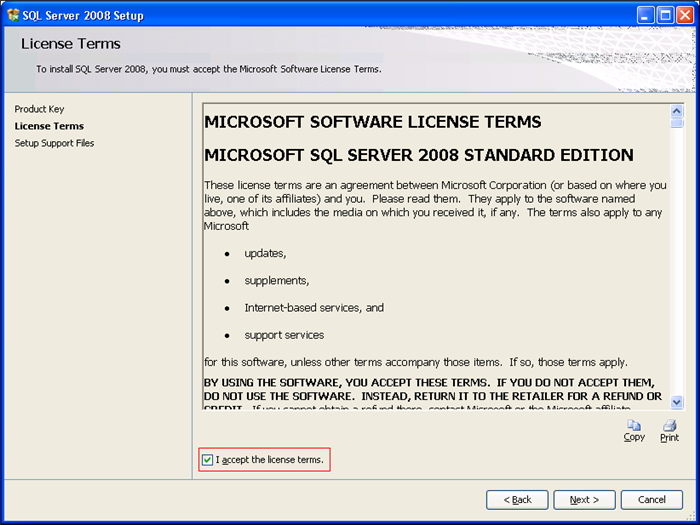
9. Click Install to proceed.
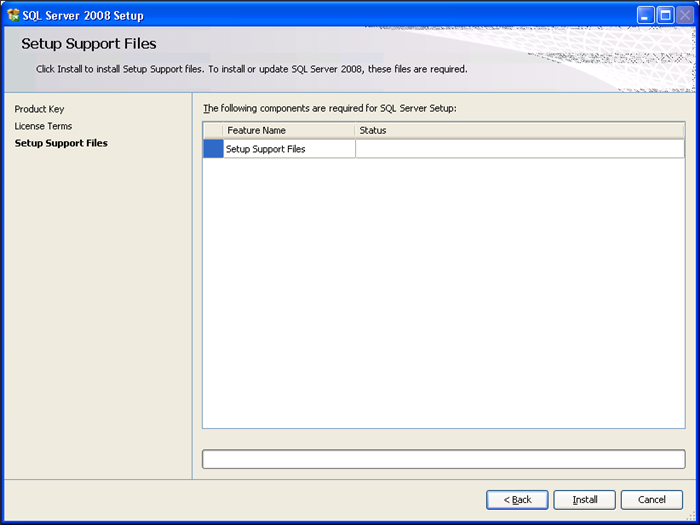
10. Click Next to proceed.
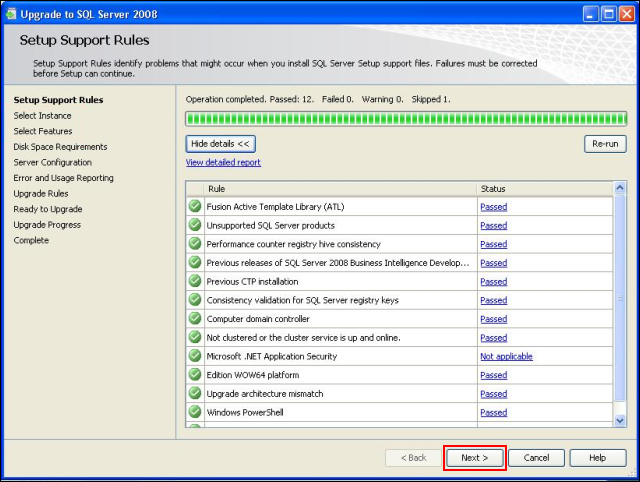
11. Select the relevant instance of SQL Server to upgrade from the drop-down list and click Next.
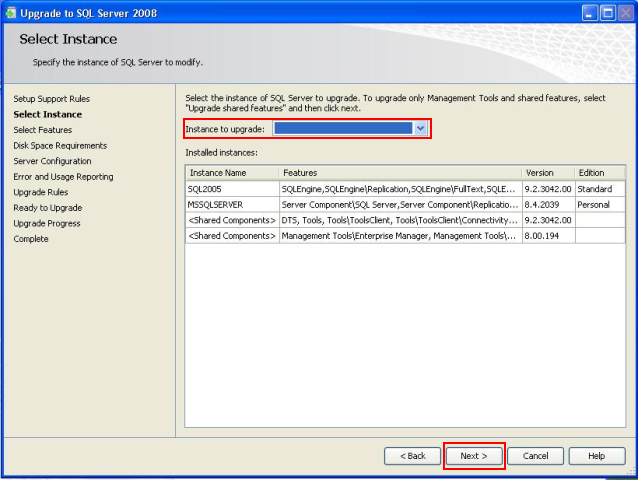
12. Click Next to proceed.
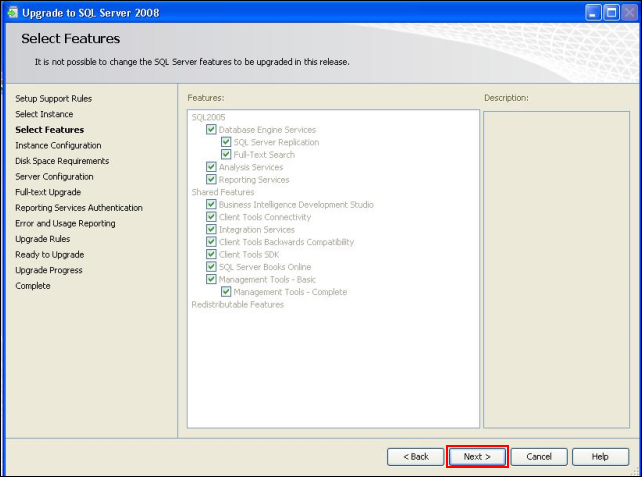
13. Make sure the Named instance is selected and enter the instance name. By default, the instance name is used as the instance ID as well. Click Next to proceed.
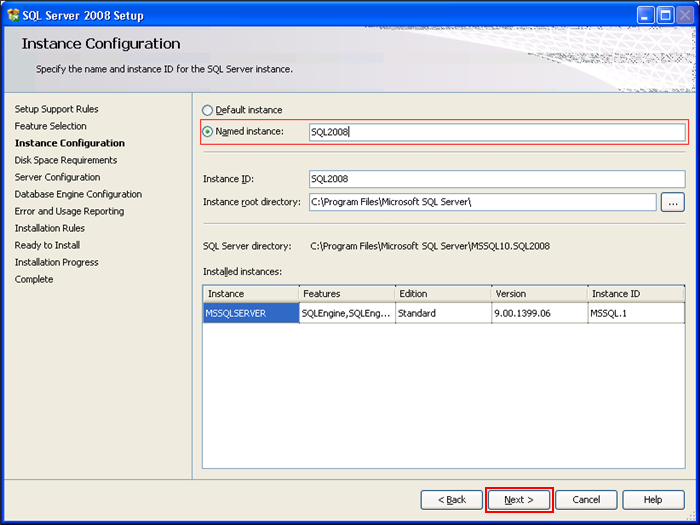
14. The Disk Space Requirements screen is displayed. Click Next to proceed.
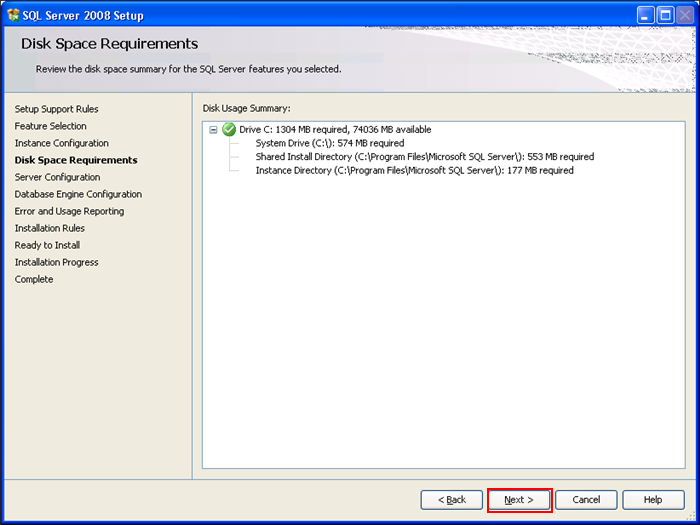
15. Select NT AUTHORITY\SYSTEM under the Account Name column for the available SQL Server service. Click Next to proceed.
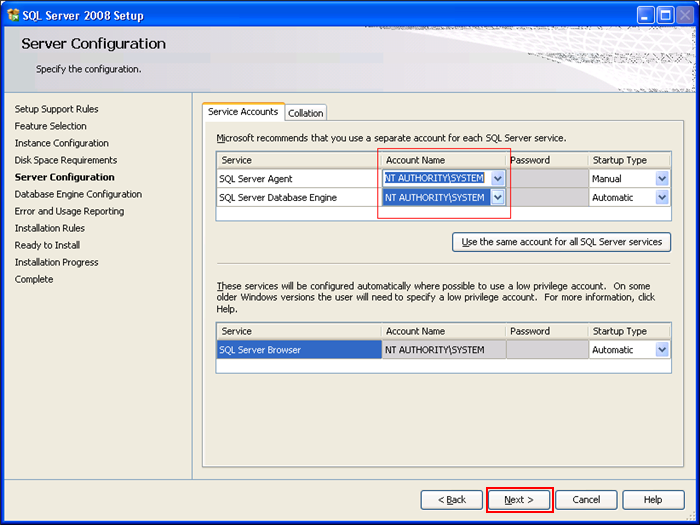
16. Select Import, Rebuild, or Reset to upgrade the Full-Text catalogs. Then click Next to proceed.
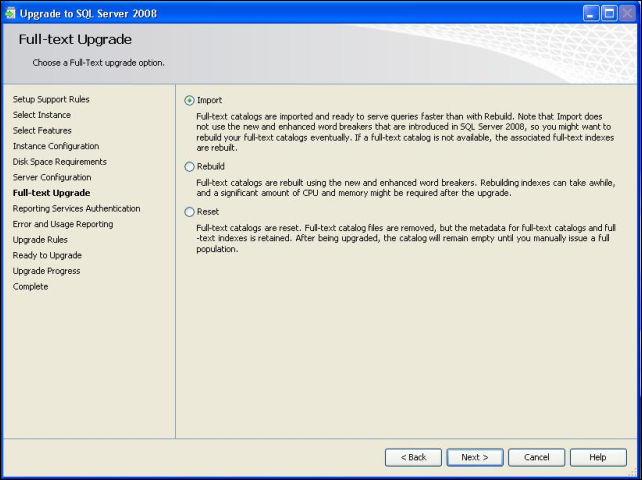
17. Select the relevant authentication mode to upgrade the Reporting Services. If you have selected the SQL Server Authentication mode, you are required to enter the account name and password. Click Next to proceed.
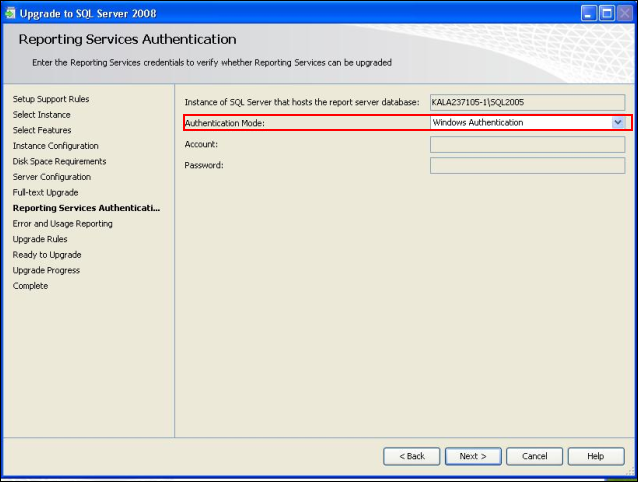
18. Select the options for Error and Usage Reporting to specify the information that you want to send to Microsoft that will help to improve SQL Server features and services. Click Next to proceed.
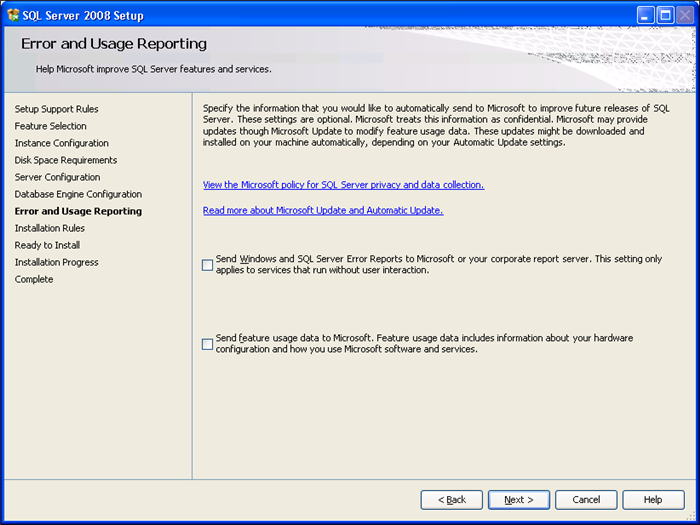
19. Click Next to proceed.
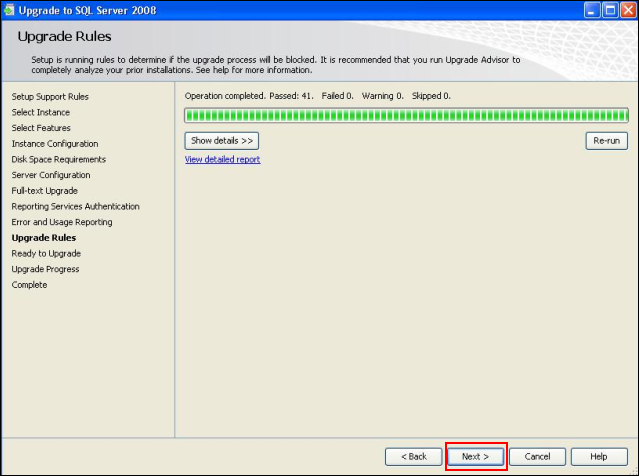
20. An overview of the upgrading details is displayed. Click Upgrade to proceed.
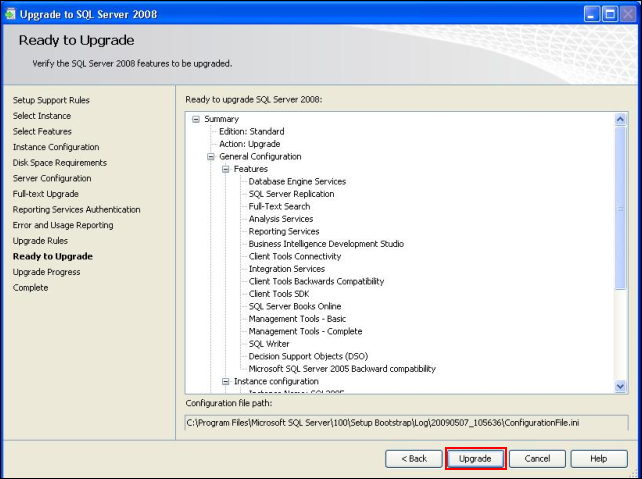
21. It will take some time to upgrade to SQL Server 2008. Click Next to proceed after the upgrading is completed.
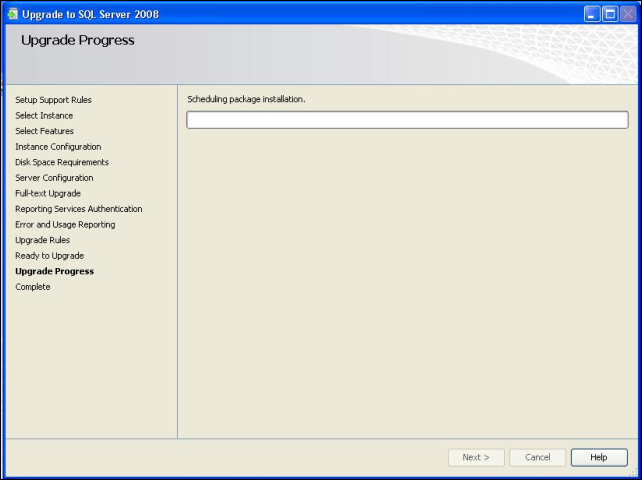
22. Click Close to exit the setup once the upgrade is completed successfully. If you are prompted to restart your computer, restart it.
